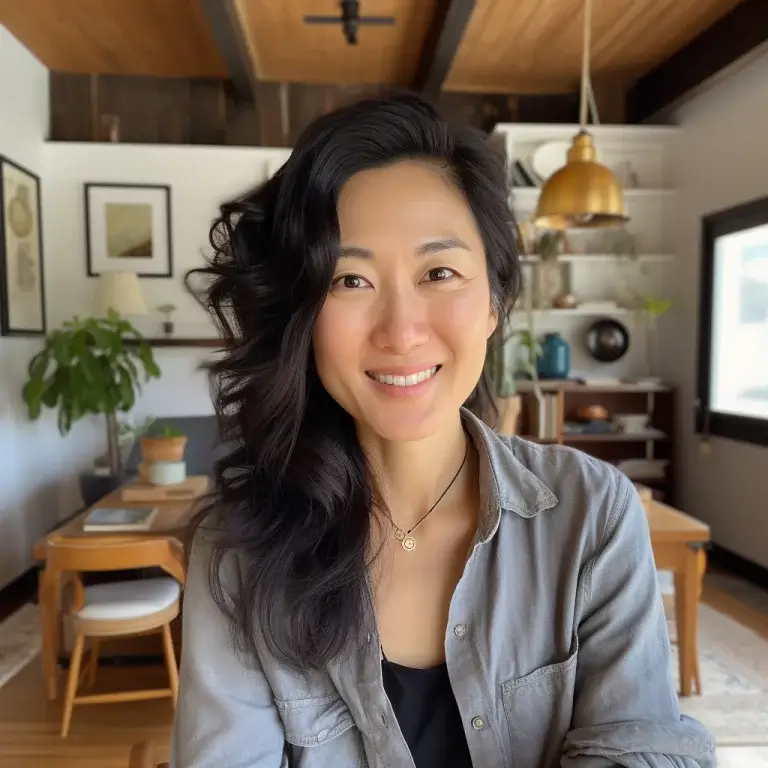Are you looking to add character to your home with a pyramid roof? Many homeowners don’t know the basics of these striking roof styles.
Pyramid roofs stand out with their four sides rising to meet at a point – they’ve been used across the world for hundreds of years, yet few understand their real benefits.
With this guide, you’ll learn why pyramid roofs shed water better than flat options, how they hold up in harsh weather, and what makes them worth the cost. The right roof choice can add value to your home while keeping you safe.
Ready to find out if a pyramid roof suits your needs? Let’s start with the key facts you need to know about these classic roof designs.
What Are Pyramid Roofs?
Pyramid roofs feature four equal sides that slope upward to meet at a single point at the top.
These roofs have no flat spots or vertical ends, with all sides forming a clean slope from the walls to the peak.
Also known as square hip roofs or four-sided roofs, these designs show up in buildings across many countries and time periods.
They gained wide use in homes and small structures as far back as ancient Egypt, offering both style and helpful water-shedding qualities.
The form encompasses many smaller buildings, detached garages, gazebos, and pool houses, demonstrating both visual balance and practical functionality.
History and Evolution
Pyramid roofs first took shape in ancient homes, where builders aimed to solve basic shelter problems.
The style came from need rather than looks, with origins in Egyptian, Asian, and African building methods.
- Early builders used the form to shed rain and snow quickly
- The style gained favor in homes where roof strength was key
- Unlike purely fancy add-ons, pyramid shapes served useful purposes
In ancient homes from 3000 BCE, these roofs helped with both water runoff and heat control. The style then spread to Greek and Roman buildings of later times.
As groups moved across lands, they took this roof style with them. You can spot these roofs in towns across Europe and Asia, demonstrating the effectiveness of the design. By the 1800s, the style became common in Victorian houses, where both function and beauty mattered.
Today, these roofs exist on homes in many countries, each with small tweaks to suit local climate, building supplies, and house styles.
Pyramid Roofs’ Common Uses and Applications
These five settings show where pyramid roofs shine in both form and function.
1. Gazebos and Garden Structures
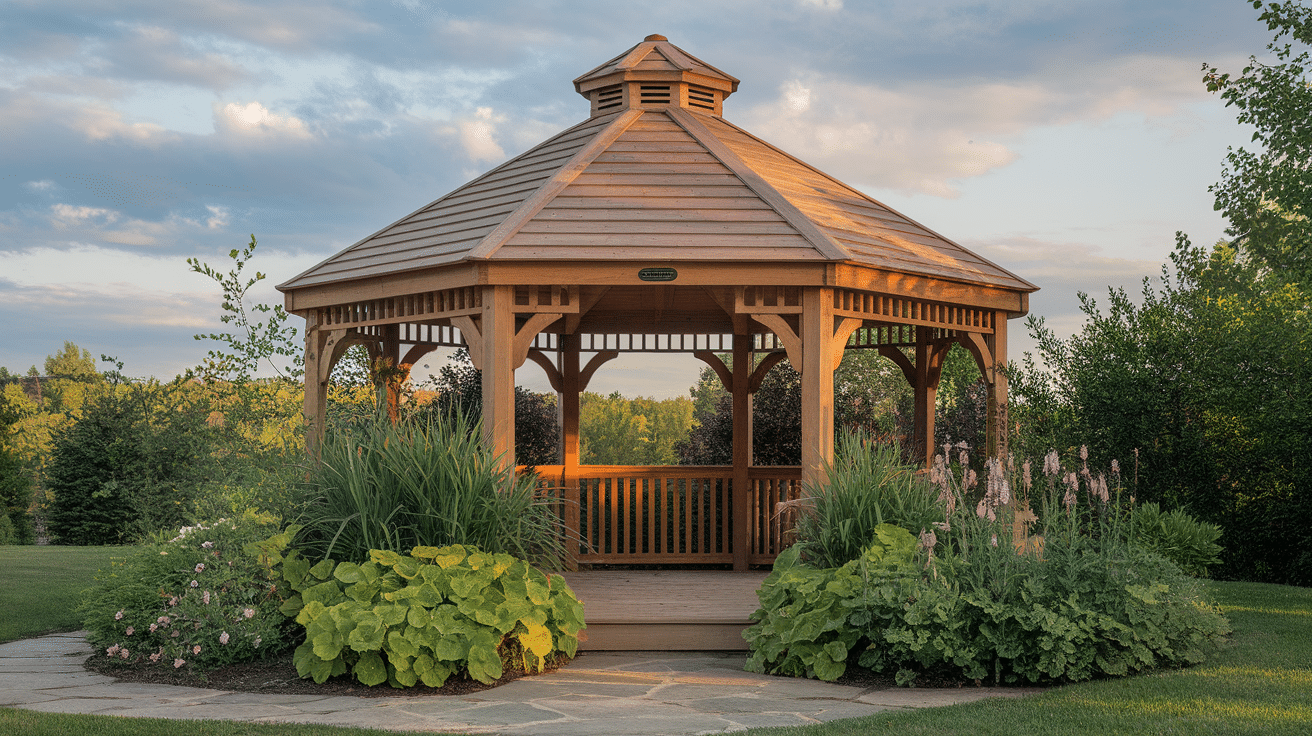
Gazebos and garden structures often feature pyramid roofs that match their compact look. These outdoor spaces, built for rest and shade, use the roof style to handle rain while looking good.
- Works well with small square or round bases common in garden designs
- Sheds water in all directions, keeping the space below dry
- Creates a focal point that draws the eye in outdoor settings
- Forms clean lines that suit both formal and casual garden styles
Note: Many gazebo pyramid roofs include a small vent at the peak to allow hot air to escape on warm days.
2. Porches and Entryways
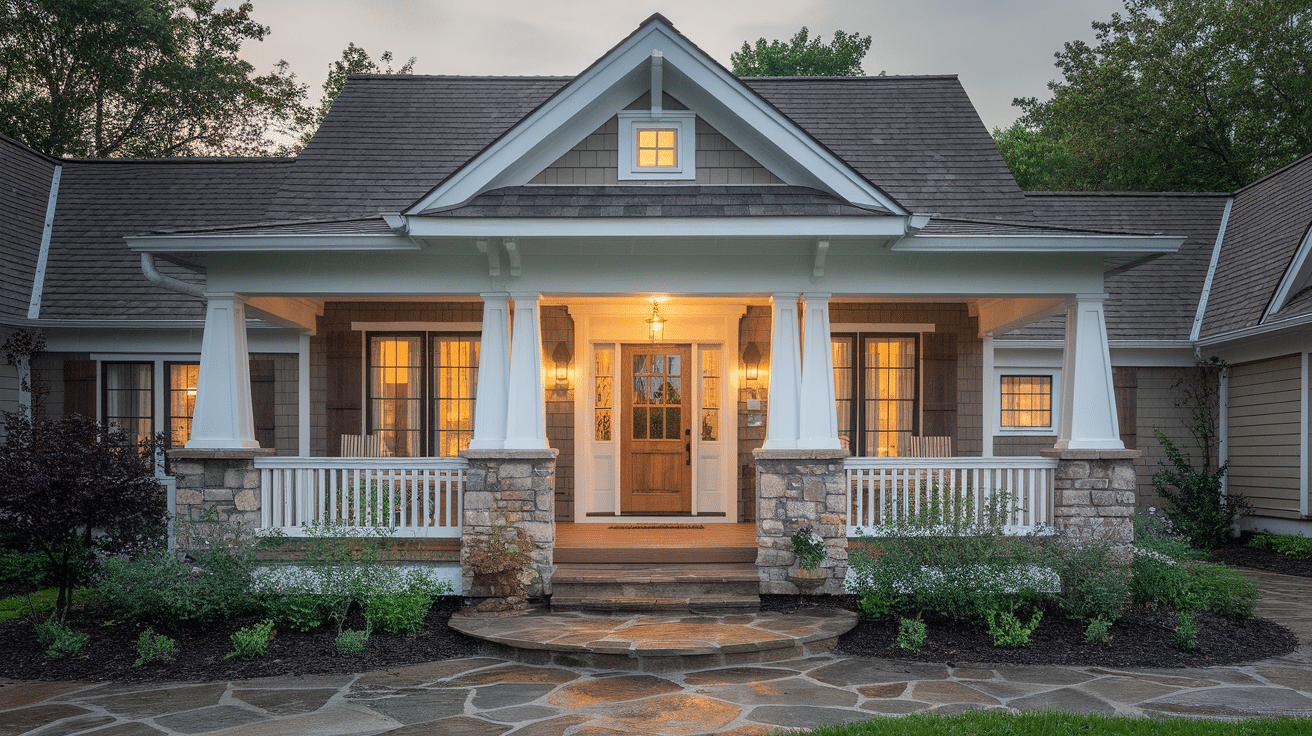
Porches and entryways from many time periods use pyramid roofs to mark the way into a home. These smaller roof sections add visual interest and weather protection.
- Offers a clear visual cue that marks the entry point
- Uses less framing wood than some other roof types
- Provides equal rain runoff on all sides of the porch
- Creates a sense of height that draws guests to the door
Note: Look for pyramid-roofed porches with posts at each corner, which frame the entrance and support the roof’s weight.
"Porches and entryways from many time periods use pyramid roofs to mark the way into a home. For more inspiration, explore these front porch ideas to enhance your home's curb appeal."
3. Small Homes and Cabins
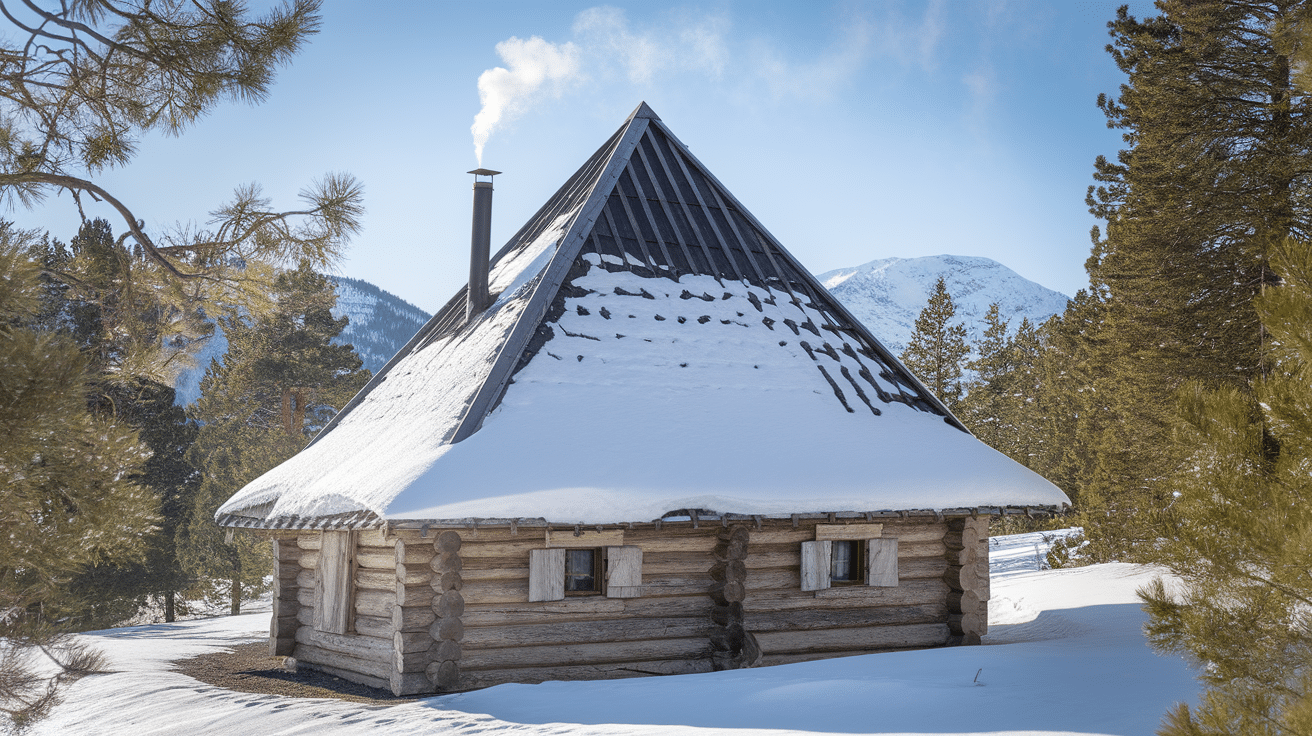
Small homes and cabins often sport pyramid roofs to top their full structure. These modest buildings benefit from the simple, strong shape.
- Works with the square or nearly-square base of many small homes
- Pairs well with log construction and stone walls
- Helps move snow off all sides in winter settings
- Creates loft space that can be used for sleeping or storage
Note: Small home pyramid roofs sometimes feature a steeper pitch in snowy areas and a more gentle slope in warmer zones.
4. Towers and Turrets
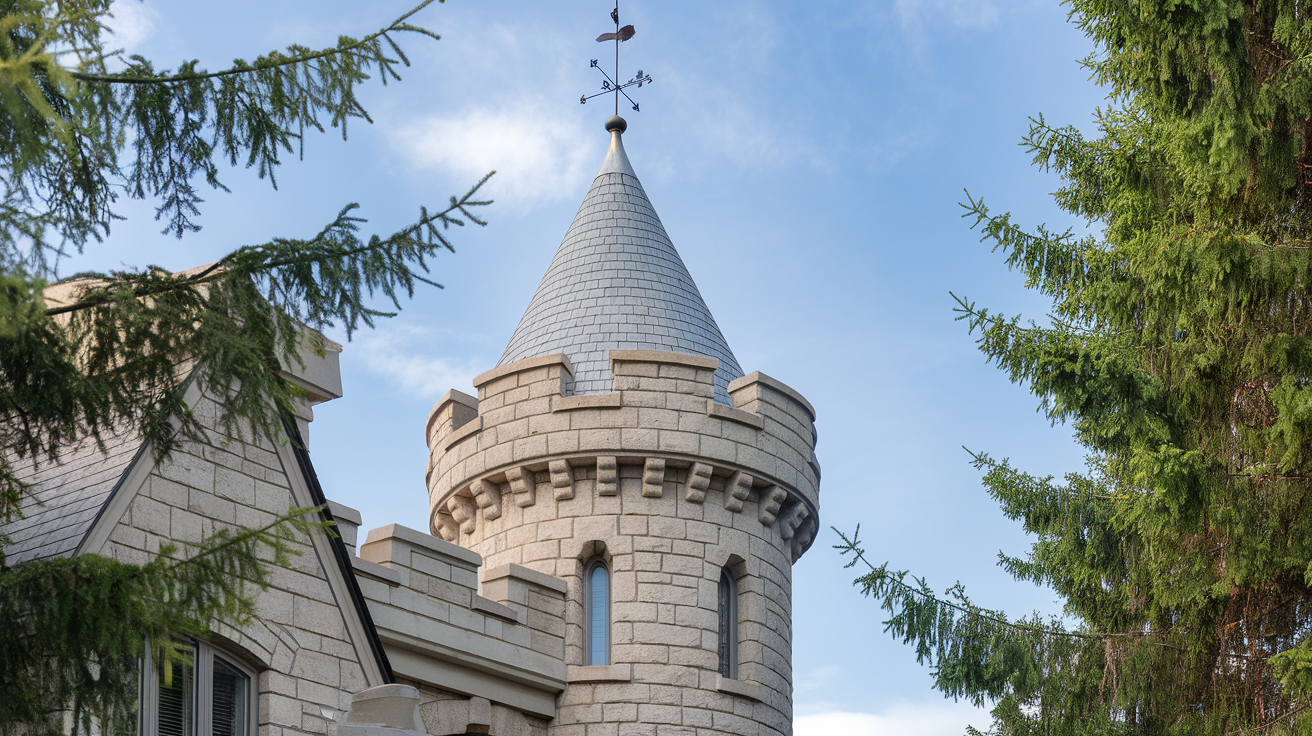
Towers and turrets use pyramid roofs to cap these tall, narrow home features. The roof shape brings these elements to a neat point that stands out.
- Stands up well to wind at higher heights
- Allows for simple framing on small tower footprints
- Creates the classic “castle” look many homeowners want
- Forms a clean line against the sky that can be seen from far away
Note: Many tower pyramid roofs end with a finial or weather vane at the peak, adding extra height and style.
5. Modern and Minimal Homes
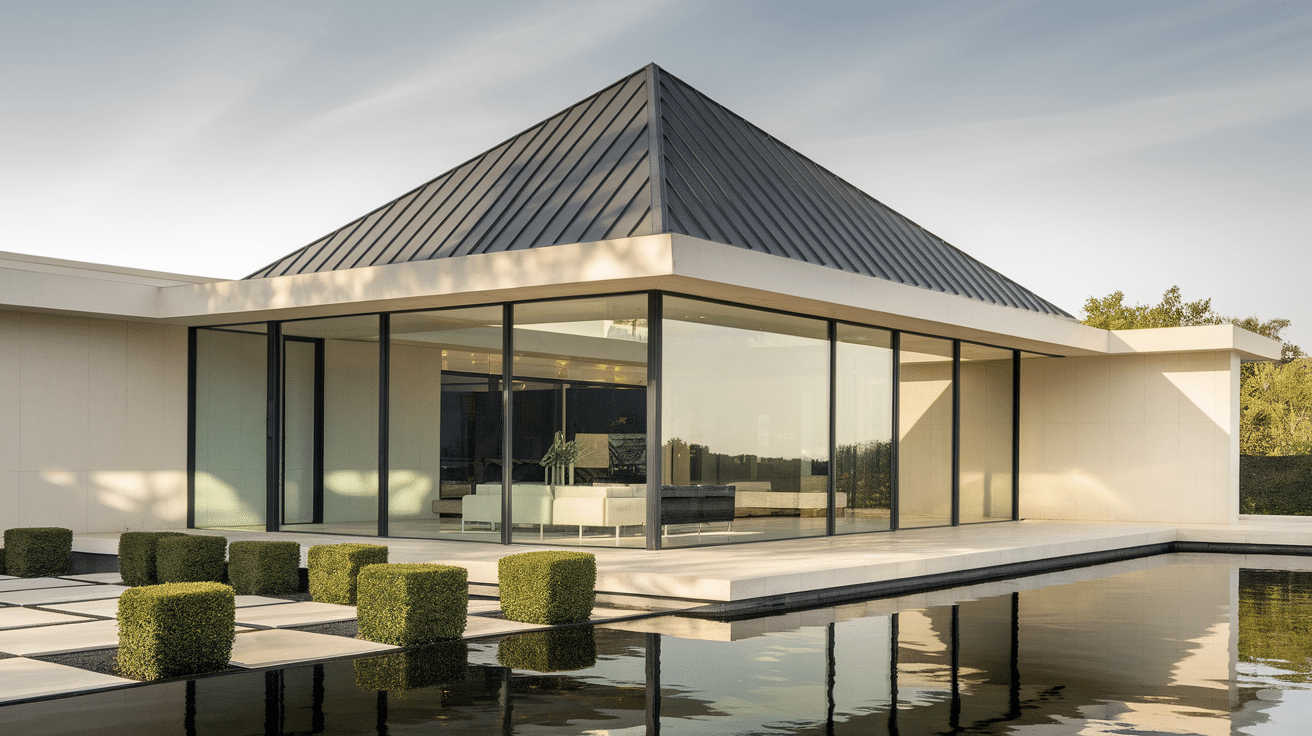
Modern homes sometimes use pyramid roofs to create clean lines while staying useful. These newer versions keep the basic shape but often use current materials.
- Works with flat walls for a stark, clear look
- Pairs with large windows that let in plenty of light
- Helps with water runoff without needing gutters in some designs
- Creates visual drama with its simple, strong shape
Note: Some modern pyramid roofs leave the underside open to the rooms below, showing the frame and creating tall ceiling spaces.
Advantages and Disadvantages: Pyramid Roof
Below is a comparison table showing the key pros and cons of choosing a pyramid roof for your home:
| Aspect | Advantages | Disadvantages |
|---|---|---|
| Design Appeal | Adds clean lines and classic look to structures | Limited to square or rectangular base structures |
| Wind Resistance | Superior wind resistance with no flat sides | Peak can be stressed in very high winds |
| Cost Factors | Simple form may reduce material waste | More expensive than basic gable roof construction |
| Space Usage | Creates usable loft space in center areas | Less head room near edges than vertical walls |
| Structural Strength | Self-bracing design adds stability | Requires proper center support |
| Maintenance | No valleys means fewer leak points | Peak and four seams need regular checks |
| Construction | Single roof shape simplifies some aspects | Requires precise cutting of rafters at same angle |
| Resale Value | Provides notable curb appeal | May seem too specific in style for some buyers |
| Weather Performance | Sheds water and snow in all directions | May need extra roof pitch in snowy areas |
| Insulation | Can be fully insulated with proper methods | Four-sided shape creates more heat loss area |
The right choice depends on your climate conditions, budget limits, and style wants for your home.
5 Troubleshooting Common Pyramid Roof Issues
When your pyramid roof needs help, knowing what to look for saves time and money. Here are the main problems and their most effective solutions:
1. Leaks at the Peak Point
Problem: Water often finds its way into homes at the very top of pyramid roofs. This happens because all four roof planes meet at this single point, making it a weak spot.
Solution: Use a high-quality cap system at the peak, with proper underlayment that extends at least 12 inches down from the top point in all directions.
2. Shingle or Tile Slippage
Problem: The steep pitch of many pyramid roofs can cause roofing materials to slip downward over time, creating gaps near the peak and bunching at the edges.
Solution: Use special high-wind fastening methods with extra nails per shingle, or switch to interlocking tiles that resist slipping on steep slopes.
3. Uneven Weathering on Different Sides
Problem: Sun exposure hits each face of the pyramid differently, causing some sides to wear and fade faster than others, making repairs tricky.
Solution: Choose highly UV-resistant roofing materials, and when replacing damaged sections, weather-match new materials to the sun-exposed sides.
4. Poor Ventilation Leading to Heat Buildup
Problem: The pointed shape makes standard roof vents hard to place, often leading to hot air trapped at the peak that damages roof materials from below.
Solution: Install a custom peak vent system or small, low-profile vents near the top of each face to allow proper air flow through the roof structure.
5. Rainwater Runoff Management
Problem: Without proper gutters, the four-sided runoff from pyramid roofs can create soil erosion at corners and foundation issues from splash-back.
Solution: Install wide gutters with extra-large downspouts at each corner, and use rain chains or ground-level drainage systems to direct water away from your foundation.
Conclusion
Pyramid roofs offer a mix of good looks and useful features for many home styles. If you’re thinking about this roof type, you now have the facts needed to make a smart choice.
We’ve looked at the past of these roofs, where they work best, and what makes them stand out from other options. The clean lines and four-sided shape bring both style and function to homes, gazebos, and more.
While these roofs cost more than basic types, their strength against wind and water makes them worth it for many owners. Just make sure you work with roofers who know how to handle the unique angles.
What will you do with your roof project? Will a pyramid roof suit your needs? The choice is yours, but now you can make it with full facts.


